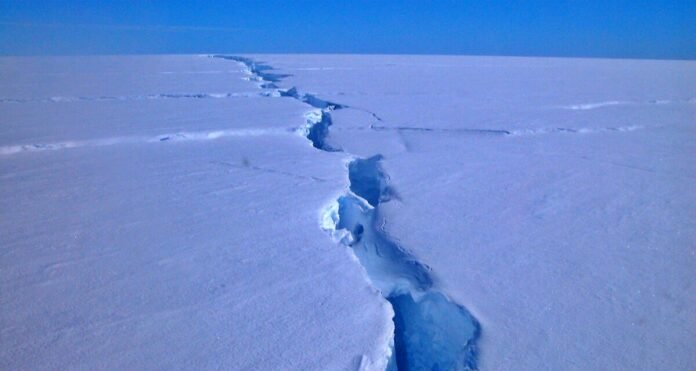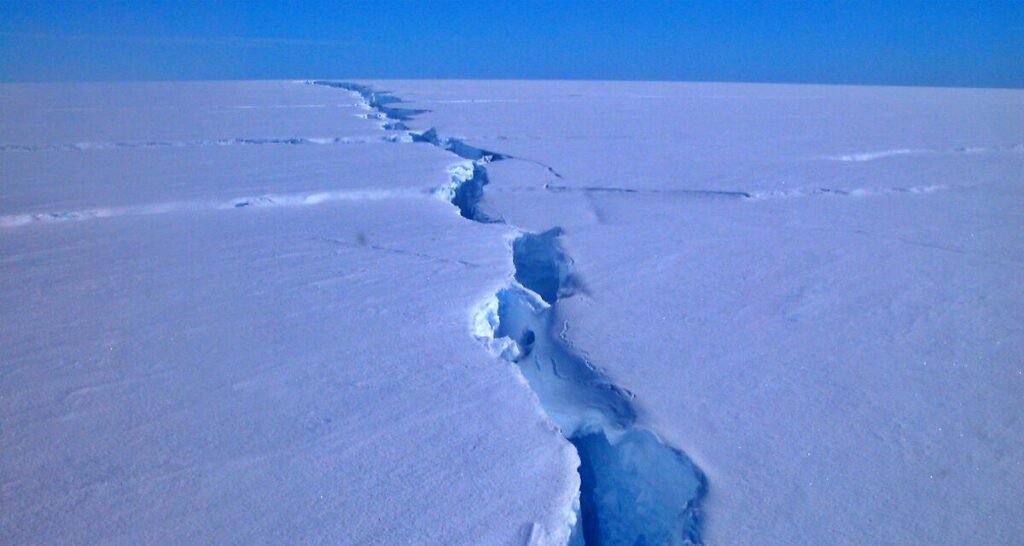
Reading (UK): West Antarctica’s giant Thwaites Glacier contains enough ice that could raise global sea levels by 65cm if it collapsed completely. And, worryingly, recent research suggests that its long-term sustainability is questionable because ice continues to fall from the glacier.
If the global sea level rises by 65 cm, it will change the entire coastline. To better understand this, since 1900, the sea level has increased by about 20 cm, as a result of this rise, communities living in the coastal areas have been forced to move out of their homes and due to floods, brackish water Environmental problems such as water contamination and habitat loss are on the rise. But what is worrying is that Thwaites, sometimes referred to as a “catastrophic glacier” because of its key role in the region, would not be the only glacier to fall.
If its ice fell into the ocean, it would be a chain reaction, and with it the collapse of other nearby glaciers, which would mean a rise in sea level by several meters. This is because the glaciers in West Antarctica are known to be vulnerable because of a mechanism called Marine Ice Cliff Instability, or MICI, where large and unstable ice cliffs are exposed and fall into the ocean as the ice moves away.
A rise of several meters in sea level would submerge many of the world’s major cities – including Shanghai, New York, Miami, Tokyo, and Mumbai. It will also cover large amounts of land in coastal areas and largely swallow low-lying island nations such as Kiribati, Tuvalu, and the Maldives. As large as Britain, the Thwaites is a frozen river of ice roughly the size of Great Britain. It already contributes to about 4% of global sea-level rise.

Since 2000, the glacier has suffered a net loss of more than 1000 billion tons of ice and has increased steadily over the past three decades. Its flow rate has doubled in 30 years, meaning twice as much ice is going into the ocean as in the 1990s. The 80-mile-wide Thwaites Glacier, the widest glacier in the world, is held in place by a floating platform of ice called an ice shelf.
This platform stops the glacier and also slows its flow, but scientists have just confirmed that this ice platform is destabilizing rapidly. According to Erin Petit, a glaciologist at Oregon State University, the surface of the eastern ice shelf has developed slanting cracks and could collapse within ten years.
Research published in 2020 also supports this point, which also mentions the development of cracks and crevices on the Thwaites Ice Shelf. These indicate that it has become structurally weak. If Thwaites’ ice shelf collapsed, it would be the beginning of the end of the glacier. Without its ice shelf, Thwaites Glacier would release all of its ice into the ocean. The other unstable glacial ice shelf – which can be considered a floating extension of the Thwaites Glacier – is one of many scientists are watching closely in the Amundsen Sea Basin, West Antarctica. Many of the ice caps that hold glaciers there, including Thwaites and its surrounding glaciers, the Pine Island Glacier, are being eroded by rising ocean temperatures.
Warmer ocean waters are able to loosen these floating ice caps, which by melting the ice from below can thin and weaken its crust, developing the cracks and fractures seen at the surface. The melting of the bottom layer of ice caps can also damage the anchoring point where the ice meets the seafloor backward. Since the slope of the sea in the Amundson Sea is downward, in such a situation, if the glacier melts rapidly, then major changes can occur around the world.
Ultimately, if the ice caps leave their place, it means that West Antarctic glaciers will be difficult to hold – causing them to break faster and cause sea levels to rise significantly. However, scientists are still considering MICI, and questions remain about the future of West Antarctic glaciers. While the collapse of Thwaites could certainly lead to a major collapse event, not everyone believes it will happen.
Others are also of the view that the destabilization of Thwaites’ ice sheets and glaciers would not have the kind of catastrophic consequences that need to be feared. According to him, huge chunks of ice that would break through the layers of glaciers and platforms could also act to prevent glacier collapse. While uncertainty remains about what exactly will happen in West Antarctica, one thing is certain – ice falling from Thwaites Glacier will continue to raise global sea levels for many years to come.




















































